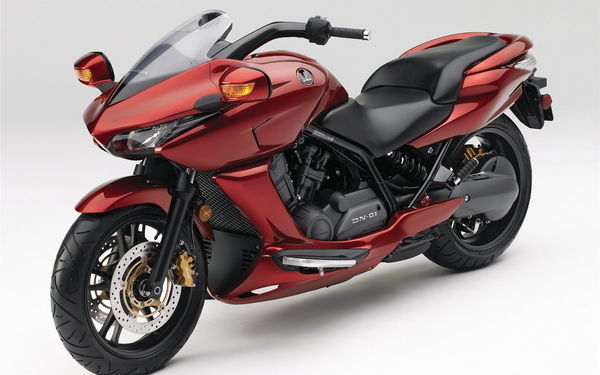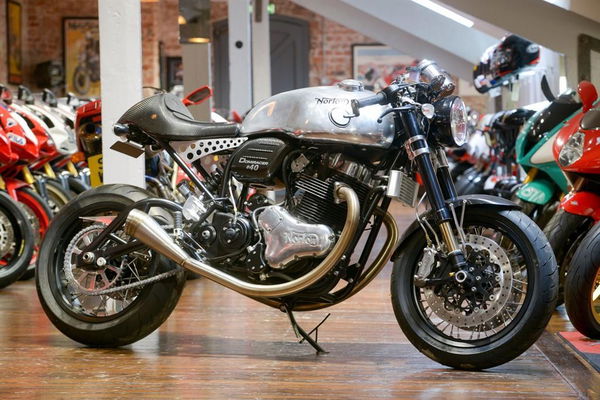The 10 Best V4 Motorcycles Ever Made
Honda may no longer have a road V4 – but Ducati and others are proving they’re here for good. Here’s our round-up of the 10 best road-going V4s. Ever…

With the launch this week of Ducati’s significantly updated Multistrada V4 S, which has had a myriad of tweaks including becoming Euro5+ compliant, not to mention all the talk of Yamaha being about to launch a new V4-powered MotoGP contender, it’s clear the V4 engine layout has a healthy future, even if one of its key proponents of the past, Honda, no longer produces a road-going version.
But the V4 is not just engine for the present and future – it also has a star-studded past. Way back from 1935-1939, for example, Brit brand AJS came up with a phenomenally advanced V4 racer that later sported both liquid-cooling and a supercharger.
Ducati also had a V4 decades before the Multistrada – the 1964 Apollo. That engine was also 1200cc (well, 1257 to be exact) and produced 100bhp but sadly never made it into showrooms.
While even Harley came up with a V4 years before Honda… well, almost. Preceding its switch to its all-new, all-alloy Evolution V-twin in 1983, the Milwaukee legend produced a full-size, fully operational V4-powered alternative, with a V4 engine developed by Porsche. Called the Nova it was abandoned at the last minute in favour of the ‘Evo’.
Even so, there are plenty of V4 success stories, and not just from Honda. Here’s our pick of the best, in chronological order…
1984 Yamaha RD500LC

Bet you didn’t expect a Yamaha up first, and especially not a two-stroke, but the 1984 RD500LC was both and much more besides. The first of the ‘80s ‘GP replicas’ (ahead of Honda’s NS400R triple and Suzuki’s square four RG500), the RD was inspired by King Kenny Roberts’ first grand prix V4, the 1982 OW61 (with a box-section cradle frame), styled akin to 1983's succeeding OW70 (which had the first Deltabox), with the result being the most anticipated bike of the mid-1980s. In truth, with around 85bhp and a £3000 price tag, the reality didn’t quite live up to the dream, even in even-rarer aluminium framed RZ500 Japan/Australian market forms.
What’s more, with twin geared cranks it wasn’t a true V4, had little race success and with supersport 600s for £1000 less just around the corner, the RD was painfully short-lived as well. Today, however, it’s one of the most collectable machines of its decade.
1985 Yamaha VMX1200 ‘Vmax’
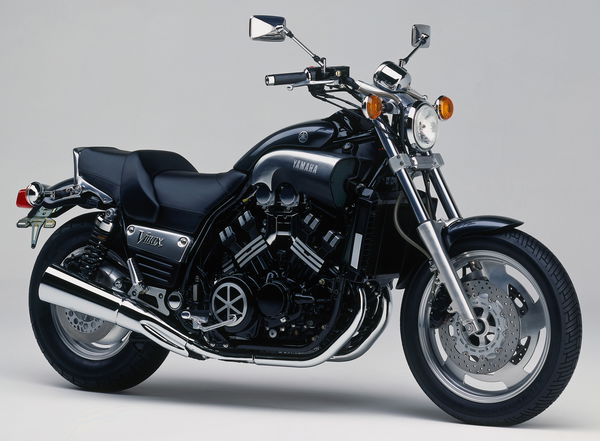
If the RD500LC didn’t quite live up to expectations, Yamaha’s next V4, more than exceeded them. Actually, that’s not quite accurate: The 1985 VMX1200, or simply the Vmax, as it was known, was in truth based on an earlier V4, the 1983 Venture full-dress tourer which, although good, wasn’t very exciting. What was, however, was the mad, hot-rod inspired Vmax, which was based on the same 1198cc, V4 engine but boosted from 97bhp to a whopping 140 by a clever ‘V-Boost’ system which basically channelled two carbs into one cylinder at designated revs.
The result, with low-slung, fat-tyred drag styling contributed by British custom king John Reed, proved a sensation which lived on until the late 1990s, was eventually sold even in the UK, and retains a strong following to this day.
1986 Honda VFR750
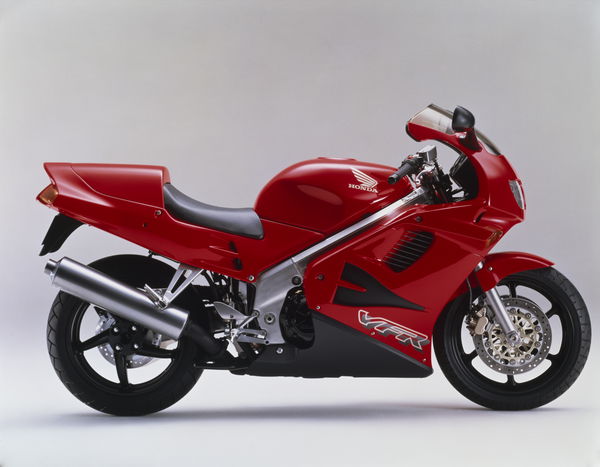
No, the VFR wasn’t Honda’s first V4 (that accolade went to the 1983 VF750S then succeeded by the sports VF750F plus 400, 500 and 1000cc versions) but it was certainly among the best. Flaws with those original VFs, most famously camshaft failings which led to the infamous ‘chocolate cam’ slur, prompted Honda back to the drawing board and, with no expense spared, came up with a road V4 that was beyond criticism.
The 1986 VFR750F was the result. That bike spawned a series of increasingly sophisticated and refined successors, first in 1988, then the 1990 ‘Pro-Arm’, then a further updated 1994 version, with the latter still considered by many as one of the best bikes ever built – better even than its fuel-injected 1998 successor and certainly better than the 2001-on V-Tec version.
1987 Honda VFR750R (RC30)

In parallel to the 1986 chain-drive cam VFR750F, Honda also developed a V4 production racer, although this time with gear-driven cams, which set out to be the unquestioned best of all. The result was the now near-legendary VFR750R (or RC30) which sported Pro-Arm rear suspension, produced an ultra-flexible 112bhp, redefined sports bike handling, looked utterly gorgeous and won virtually every category it competed in.
It won the first two World Superbike championships, the F1 crown, innumerable endurance and TT events and today, with under 5000 built, remains one of the most collectable Hondas ever. A little brother, the VFR400R (or NC30) became a sports rite of passage for a generation while a V4 successor, the RVF750R (RC45) almost, but not quite, matched the RC30’s success and allure.
1990 Honda ST1100/1300 CT1300
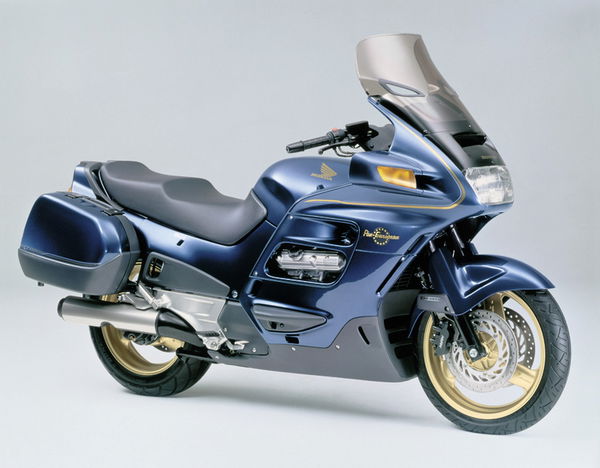
If the RC30 was the ultimate production racer V4, the ST1100, or Pan European, as more commonly known, was the ultimate ‘touring’ one. An upright, shaft-drive sports tourer (with the emphasis on ‘tourer’), with integral panniers and enviable practicality, comfort and durability, the Pan, unusually, was powered by a longitudinally mounted bespoke 1085cc V4 producing 100bhp targeted specifically at Europe (hence its name).
It also proved such a success, not just with touring fans but also with emergency services such as the police and AA, that it remained in production for a full 12 years. A successor, the 117bhp STX1300, was better still but couldn’t quite match its success, while an oddball cruiser incarnation, the 2014 CTX1300, was a short-lived flop, proving that V4 Hondas aren’t always a success.
2009 Yamaha VMAX

A full 24 years after the 1200cc original, Yamaha launched an all-new Vmax (this time called the VMAX), powered by an all-new and now 1900cc shaft drive V4. First displayed as a concept at the 2005 Tokyo Show, the second-generation VMAX is a classic example of a Yamaha premium showstopper produced with no expense spared (the 2005 MT-01 is another).
Its bespoke engine produced a whopping 197bhp; its chassis was aluminium and remarkably light; top-spec cycle parts included radial brakes and inverted forks; it handled far better than most expected and, best of all, from a standing start it delivered a thrill like nothing else. On the downside, priced around £17,000, it was also one of the most expensive Japanese bikes of its era, found few buyers and was dropped when it failed to meet Euro4 in 2017. Today, however, it’s an increasingly prized jewel…
2009 Honda VFR1200F
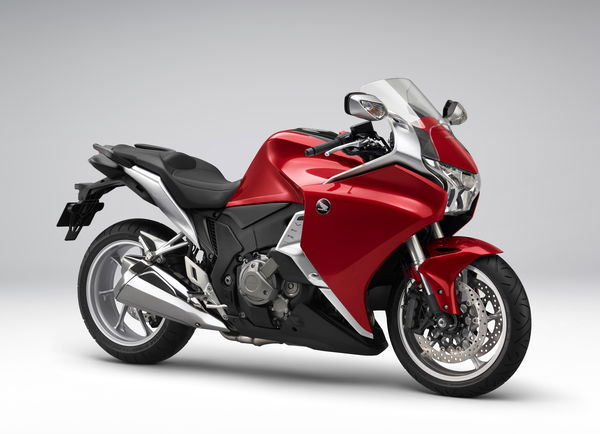
Proof (again) that even Honda can sometimes get its beloved V4s wrong…
The big VFR sports tourer was intended to be Honda’s convention-busting flagship successor to the CBR1100XX Super Blackbird. Unfortunately, after years of teases, by the time it was finally launched its 170bhp was nothing special, its equipment was lacking, its looks proved divisive, it was heavy, and its tank was too small.
Soon after, the first semi-automatic ‘DCT’ (Dual Clutch Transmission) version debuted to an equally confused and sceptical response and the big VFR’s days were numbered. In truth, the V4 powertrain itself was fabulous – fast, grunty and flexible – and was also used in an adventure version, the underrated VFR1200X Crosstourer and Ariel’s Ace. DCT, meanwhile, proved a slow burner but Honda persevered, expanded it to other models, now makes up over 50 per cent of sales (on models with the option) and paved the way for a new generation of ‘automatic’ systems from Yamaha, BMW and KTM…
2009-current Aprilia RSV4
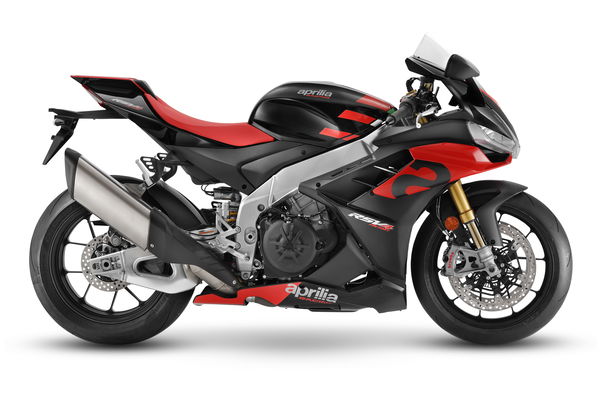
Italian brand Aprilia arguably set the template for a new generation of V4 sportsters when, now under Piaggio ownership, it launched its all-new successor to its previously V-twin-powered RSV in 2009. Its 65-degree V4 was compact, 200bhp powerful, slathered in cutting edge electronics and the resulting bike, in top-spec ‘Factory’ trim, was enough to win the world superbike crown with Max Biaggi in 2010 and again in 2012, and also with Sylvain Guintoli in 2014.
A super naked version, the Tuono, proved equally impressive and exotic while its engine formed the basis of that used by revived Norton’s V4 superbike. The Tuono gained an enlarged, 1100cc engine from 2015, which was also adopted by the RSV4 sportster from 2019 and, although now too large for racing, Aprilia’s V4 remains one of the very best motorcycle engines you can buy.
2018 Ducati Panigale V4

After taking its traditional, ‘signature’ 90-degree V-twin as far as it could with its ultra-short stroke ‘Superquaddro’ which powered the 2012 1199 Panigale, then grew into a 1285cc 196bhp version for 2015’s 1299, (neither of which managed to win the WSB crown so being the first Ducati superbike since the 851 to fail to do so), the Italian marque changed tack entirely to produce its first V4 superbike in 2018, the 211bhp Panigale V4S.
That bike has been repeatedly updated since, won WSB in 2022 and 2023 and remains arguably not just the ultimate superbike, now with 213bhp and mind-boggling electronics, but also the ultimate V4 engine.
2021-current Ducati Multistrada V4S
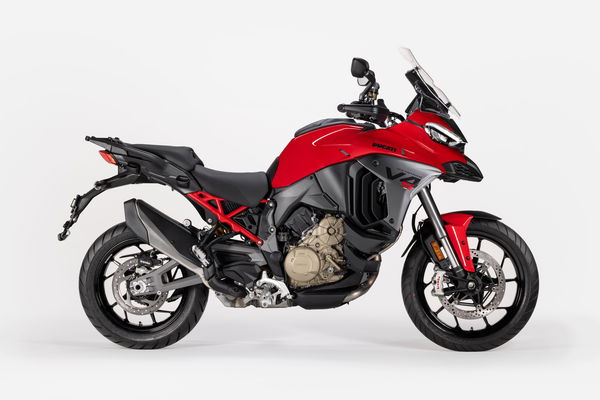
When Ducati changed its superbike signature with its 2018 Panigale V4 the legendary Italian marque didn’t stop there. The super-naked version of Ducati’s superbike, the Streetfighter, followed it down the V4 route in 2020; its adventure bike, the Multistrada, followed suit in 2021 (along with pioneering radar tech) while its power cruiser hot-rod, the Diavel, became Ducati’s latest V4 in 2023. Those latter two, however, feature a significant difference: while the sports versions use the Desmodromic valve equipped ‘Stradale’ V4, the adventure and cruiser versions use a slightly less powerful, 170bhp incarnation with more conventional camshafts and valve springs but more midrange, called the ‘Granturismo’. And, with class-leading electronics, a firing order conceived to mimic the power pulses of a V-twin (with the exhaust note to match), phenomenal all-round performance plus 36,000-mile valve service intervals, it may be the most perfect motorcycle engine yet built. Who said V4s were dead?
